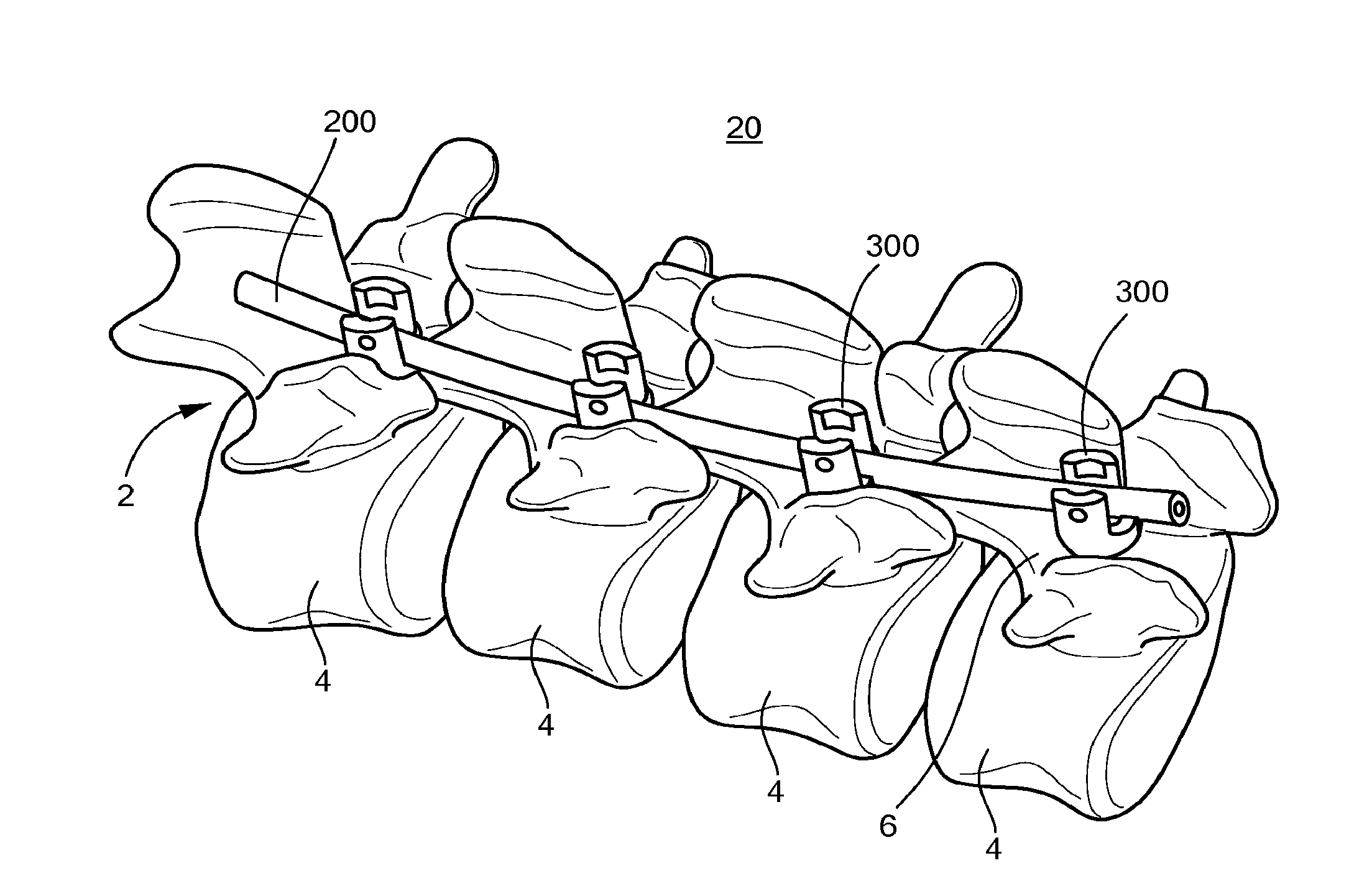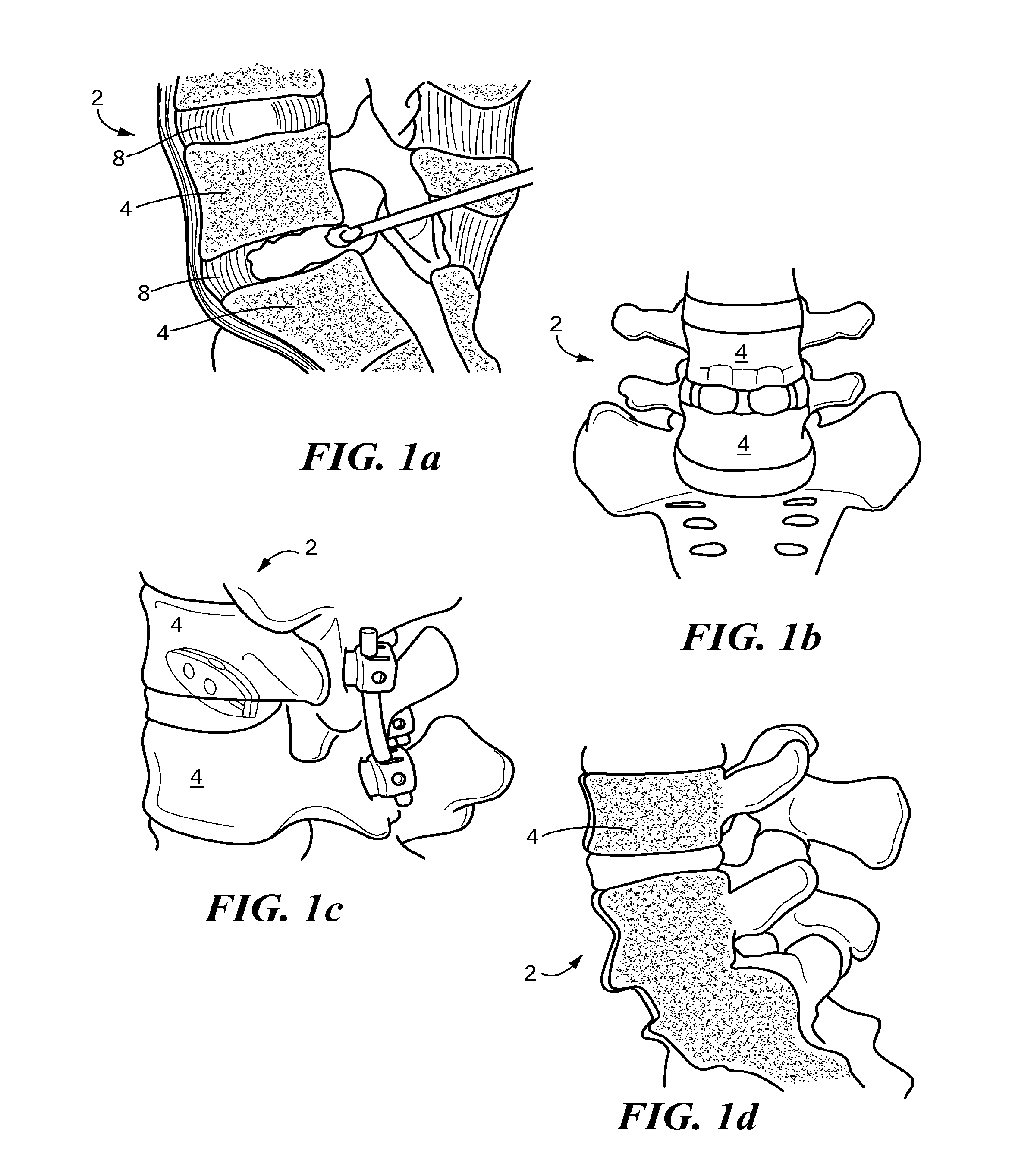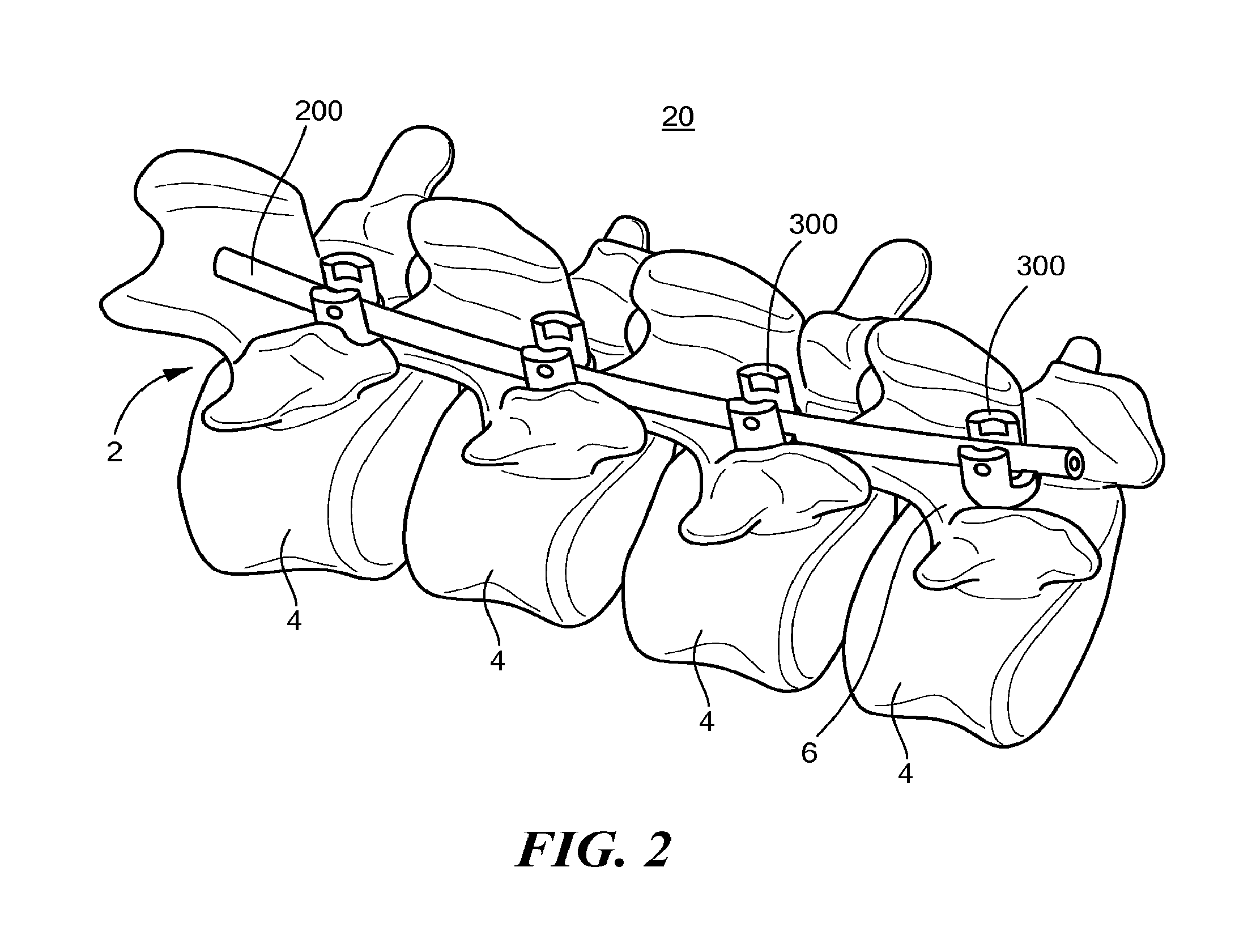Minimally invasive spinal stabilization system
a spinal stabilization and minimally invasive technology, applied in the field of minimally invasive spinal stabilization system, can solve the problem of still challenging to provide the minimally invasive spinal stabilization that is required
- Summary
- Abstract
- Description
- Claims
- Application Information
AI Technical Summary
Benefits of technology
Problems solved by technology
Method used
Image
Examples
Embodiment Construction
[0050]Referring to FIG. 2, a minimally invasive spinal fixation system 20 used to stabilize a region of the spine 2 includes a fixation rod 200 of sufficient length to extend across the vertebrae 4 to be stabilized, pedicle screws 300 for anchoring the fixation rod 200 to each corresponding vertebra 4, and a fastener 500 on each pedicle screw 300 to secure the pedicle rod 200 to the pedicle screw 300. Each pedicle screw 300 is implanted in the pedicle 6 of the corresponding vertebra 4 through a small skin incision having a length generally corresponding to a cross sectional dimension of the pedicle screw 300. In the illustrated embodiment, for example, the incision has a length of 1 cm or less, and the rod 200 is assembled with the pedicle screws 300 through a separate skin incision of 1 cm or less, as discussed further below.
[0051]Referring to FIG. 3, the fixation rod 200 is a structure that is configured to engage a suture, where a suture is defined herein as an elongated strand o...
PUM
 Login to View More
Login to View More Abstract
Description
Claims
Application Information
 Login to View More
Login to View More - R&D
- Intellectual Property
- Life Sciences
- Materials
- Tech Scout
- Unparalleled Data Quality
- Higher Quality Content
- 60% Fewer Hallucinations
Browse by: Latest US Patents, China's latest patents, Technical Efficacy Thesaurus, Application Domain, Technology Topic, Popular Technical Reports.
© 2025 PatSnap. All rights reserved.Legal|Privacy policy|Modern Slavery Act Transparency Statement|Sitemap|About US| Contact US: help@patsnap.com



